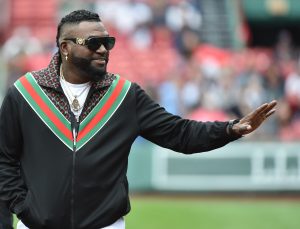Over the past couple weeks, Major League Baseball and the MLB Players Association have returned to the negotiating table on core economics issues. They’ve been the first notable collective bargaining discussions since MLB instituted a lockout early on December 2. Yet fans’ hopes that talks might quickly thereafter lead to a resolution of the work stoppage that’s soon to enter its third month are unlikely to be realized.
As Ken Rosenthal and Evan Drellich of The Athletic explained this afternoon, the sides remain divided on myriad key issues. According to Rosenthal and Drellich, the possibility of Spring Training commencing as originally scheduled “is clearly in jeopardy.” Of more import to most is the threat of a delayed start to the regular season. Multiple reports over the course of the lockout have suggested March 1 could serve as a soft deadline for a new CBA to be in place if the season is to open on the currently-slated March 31. With the calendar flipping to February in a few hours, there’ll need be rapid progress over the coming month.
According to Rosenthal and Drellich, the MLBPA views the proposals thus far made by MLB as less favorable to players than were the terms of the 2016-21 CBA. That’s an ominous development. The players union entered this round of collective bargaining talks less than enamored with that CBA and in search of a few significant changes (i.e. dramatically expanded luxury tax thresholds, a path to free agency after five years of service, a $100MM cut to revenue sharing), some of which it has since stopped pursuing.
Nevertheless, it’s not particularly surprising to hear of the union’s ongoing displeasure with negotiations given some players’ public comments on the matter. For instance, Giants player representative Austin Slater told Susan Slusser of the San Francisco Chronicle last week that he considered MLB’s most recent economics proposal “disingenuous” and “a smokescreen,” although he did characterize that set of talks as more “professional” than prior meetings had been.
Unsurprisingly, The Athletic writes that MLB believes it has made player-friendly concessions. The league acquiesced to a union proposal for a salary pool to award exceptional performers who haven’t yet reached arbitration eligibility — at least in concept. Yet there’s a massive separation in the amount of money each side would like to see involved. The union proposed the creation of a $105MM pool; MLB offered to set aside $10MM. And as Rosenthal and Drellich explain, the gap is actually larger than those numbers might suggest since the parties continue to haggle about the number of players who should qualify for arbitration.
Throughout negotiations, the MLBPA has pushed for arbitration eligibility after two years of service time. The league has considered that a non-starter, preferring to keep the previous system in place. Under that setup, most players required three years of service to reach arbitration, while a certain subset of players with between two and three years — those in the top 22% of service among their class — also qualified through the Super Two provision.
The union’s proposed $105MM pool for pre-arb players, then, would only be divided among players with less than two years of MLB service, with anyone in the 2+ service bucket reaching arbitration. MLB’s $10MM counteroffer was tied to the previous arbitration setup, to be divided among players with less than three years of service (aside from Super Two qualifiers). So, not only is the union seeking a significantly larger sum than MLB was willing to offer, the PA’s vision was to divide that money among a comparatively smaller group of players than MLB has in mind. (According to Rosenthal and Drellich, MLB is also unwilling to expand the number of players in the 2-3 year service bucket who could qualify as a Super Two in addition to its steadfast opposition to universal two-year arbitration).
As MLBTR has covered in recent weeks, numerous gaps between the parties persist. MLB and the MLBPA have differing goals on such topics as playoff expansion, an international draft (which Rosenthal and Drellich write the union is unlikely to agree to “unless it is part of a significant tradeoff”), the competitive balance tax, the league minimum salary, revenue sharing and the amateur draft order. That they’ve resumed discussions of late is a welcome development, but they remain far apart on enough important topics there doesn’t appear to be an imminently forthcoming resolution. Barring rapid progress, the specter of lost gameplay seems to loom larger than ever. The parties’ next set of economics discussions is slated for tomorrow, reports Jeff Passan of ESPN (on Twitter).

